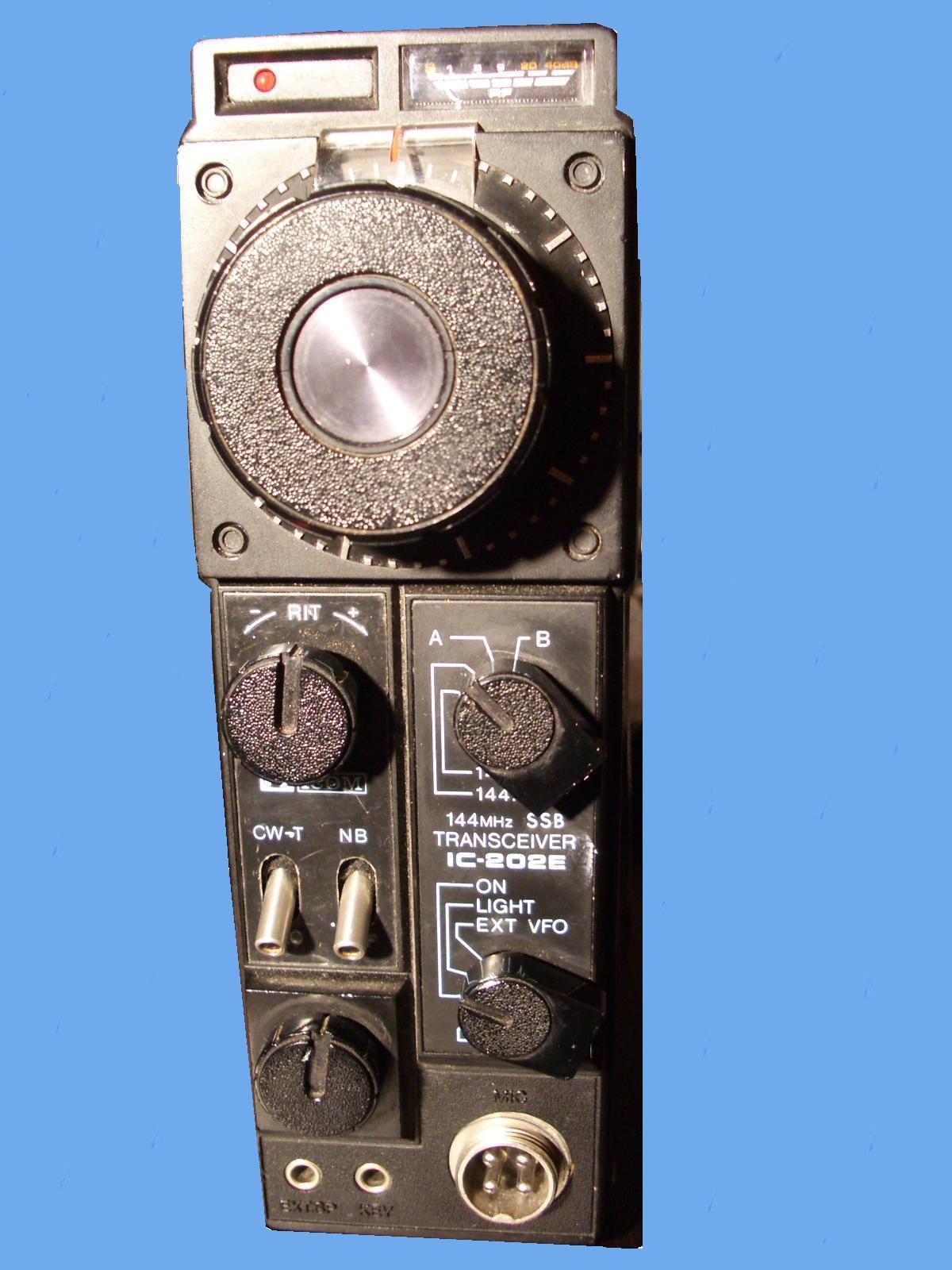Icom IC-202e ††††††††††††† GW4RWR†
Summary
This transportable from the 1980s is unusual in that it is designed to be operated from an upright position, a "bookshelf design". It uses a VXO; 4 x 200KHz ranges are available using 14.8 MHz crystals, multiplied 9x to reach 133.3MHz for low-side LO injection, and single conversion to 10.7MHz IF. Frequency is displayed on a dial skirt that is marked with 10kHz increments. USB and CW modes. I am unaware of any significant difference in design or performance between this or its younger IC-202s sibling, which also included CW sidetone and LSB.
Compared to the FT-290R, a radio of the same era, the 202í is more suitable for DX. You miss out on digital frequency display, but also avoid the 100Hz click stop frequency increment. You gain a cleaner transmitter and receiver. These Icom radios are snapped up quickly on the second hand market, and are undeniably a good choice for 2m and transverting to higher bands, if you prefer to avoid the ubiquitous FT-817. From the same period there was an IC-402 (432MHz), and an IC-502A (50MHz) which used a VFO at rather a high frequency. There seem to be far fewer of these two radios in use.
Modifications
Iíve done the usual modifications to my IC-202e, which means changing the PIN diode antenna switch for a relay, and the 3SK40 front end for a BF-981. An N-socket replaced the lousy SO-239. The erratic DC socket has also had to go, as has the telescopic whip, which was wired in parallel with the SO-239. The mixer is unchanged but I havenít noticed any receive difficulties whilst contesting from IO82HV, where the strongest signal was GW4EVX/P 16km to the north. The only problem I find is that I can inadvertently turn on the RIT, and consequently call others way off their frequency. I used to complain about the receiver audio quality, but having learnt to use earphones I realise the inadequacy of little internal loudspeakers. Both transmit and receive audio is excellen - if headphones are used, since the internal loudspeaker is awful.
Conclusion
My radio belonged to GW4HBZ until 2009. Its signal was sufficiently clean that from his Moel y Parc QTH he could tune his FT-225R receiver up and down the ssb part of the band, and feed the audio to the '202e which transmitted in-band on 144.390, just to let me have a taste of what he could hear from the hill station. The '225 was connected to a 9 element tonna, and the '202 to a vertical, but that exercise surely says something positive about both radios.
Suggestions
Tuning - Remove the VXO. Replace with DDS and put the digital freq display in the LED panel. The IC-202e has an 'external VFO' position on the power switch, the later IC-202s module does not.
Power - Remove the telsecopic antenna, and put a Mitsubishi brick against the rear panel?
Batteries - No doubt these days there are lighter and smaller alternatives to the 9 x C cells this radio uses.
